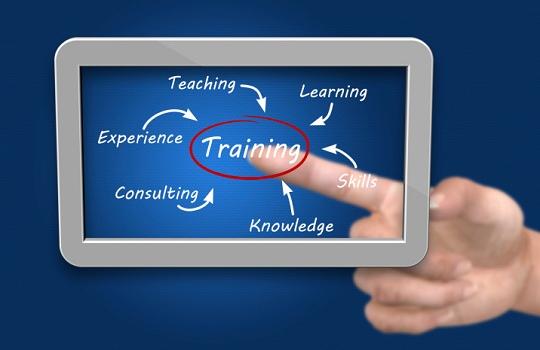In the second part of this series, Amanda Westwood provides some top tips on how to implement successful training programmes.
Top tips for internal training success
Whichever route works best for your organisation (and it may be a combination of internal and external training), if you understand which skills and knowledge positively impact business performance, you can focus your efforts on things that really makes a difference, saving you time and preventing unnecessary spend on training content that has no positive impact, or putting employees on training courses when they already have the skills. However, if you are enticed by the advantages of ‘doing it yourself’, then the following tips will hopefully be very helpful:
1. Audit employee skills, knowledge and competency levels
Knowing what skills, knowledge and competencies your employees have is crucially important before you are able to determine their links to positive business performance (and therefore areas of focus).
2. Identify what good performance looks like
Use all available data sources to compare individuals’ performance and establish a blueprint of good performance for each role. Make sure that you validate this by establishing links between individual skills and knowledge and their impacts on business outcomes.
3. Fill skills and knowledge gaps
The outputs of step 2 analysis should then be used to make sensible decisions about what development is required for each individual: specifically what, how and when, rather than the common 'sheep dip' approach to training and development.
4. Develop individualised learning strategies
Share clear performance objectives and training plans for each employee. Internal training should be closely integrated with personal development plans and manager/employee 1-to-1’s to further reinforce the learning experience and cement the actual acquisition of content.
5. Schedule at optimal times
In busy operational environments, organisations tend to focus on the scheduling of staff availability rather than training in its own right, so consider training required for induction, new product launches and changing legislation too. Then, make sure you schedule training, coaching, 1-2-1’s and team meeting schedules efficiently and without detrimental impact on service levels – an important consideration for customer facing teams. Specialist software can automate this resource intensive task and reduce the risks associated with manual processes.
6. Test, measure and continuously improve
Ensure the effectiveness of your training by conducting regular measurement and analysis and take relevant, focused action to maintain performance improvements. Present training value-add in terms of cost savings, revenue generation, customer satisfaction improvements, and compliance requirements achieved, for example. If you do so, over the longer term you will ensure that you make training investments in the right areas based on measured, focused, repeatable proven patterns of improvement rather than perceived areas of need.
Click here to read the first article in this series.
Amanda Westwood is CEO of Silver Lining Solutions, a specialist performance management software company. For over 20 years, Amanda has worked with major global organisations to improve employee performance and drive exceptional returns from learning and development initiatives.
In the second part of this series, Amanda Westwood provides some top tips on how to implement successful training programmes.
Top tips for internal training success
Whichever route works best for your organisation (and it may be a combination of internal and external training), if you understand which skills and knowledge positively impact business performance, you can focus your efforts on things that really makes a difference, saving you time and preventing unnecessary spend on training content that has no positive impact, or putting employees on training courses when they already have the skills. However, if you are enticed by the advantages of ‘doing it yourself’, then the following tips will hopefully be very helpful:
1. Audit employee skills, knowledge and competency levels
Knowing what skills, knowledge and competencies your employees have is crucially important before you are able to determine their links to positive business performance (and therefore areas of focus).
2. Identify what good performance looks like
Use all available data sources to compare individuals’ performance and establish a blueprint of good performance for each role. Make sure that you validate this by establishing links between individual skills and knowledge and their impacts on business outcomes.
3. Fill skills and knowledge gaps
The outputs of step 2 analysis should then be used to make sensible decisions about what development is required for each individual: specifically what, how and when, rather than the common 'sheep dip' approach to training and development.
4. Develop individualised learning strategies
Share clear performance objectives and training plans for each employee. Internal training should be closely integrated with personal development plans and manager/employee 1-to-1’s to further reinforce the learning experience and cement the actual acquisition of content.
5. Schedule at optimal times
In busy operational environments, organisations tend to focus on the scheduling of staff availability rather than training in its own right, so consider training required for induction, new product launches and changing legislation too. Then, make sure you schedule training, coaching, 1-2-1’s and team meeting schedules efficiently and without detrimental impact on service levels – an important consideration for customer facing teams. Specialist software can automate this resource intensive task and reduce the risks associated with manual processes.
6. Test, measure and continuously improve
Ensure the effectiveness of your training by conducting regular measurement and analysis and take relevant, focused action to maintain performance improvements. Present training value-add in terms of cost savings, revenue generation, customer satisfaction improvements, and compliance requirements achieved, for example. If you do so, over the longer term you will ensure that you make training investments in the right areas based on measured, focused, repeatable proven patterns of improvement rather than perceived areas of need.
Click here to read the first article in this series.
Amanda Westwood is CEO of Silver Lining Solutions, a specialist performance management software company. For over 20 years, Amanda has worked with major global organisations to improve employee performance and drive exceptional returns from learning and development initiatives.




